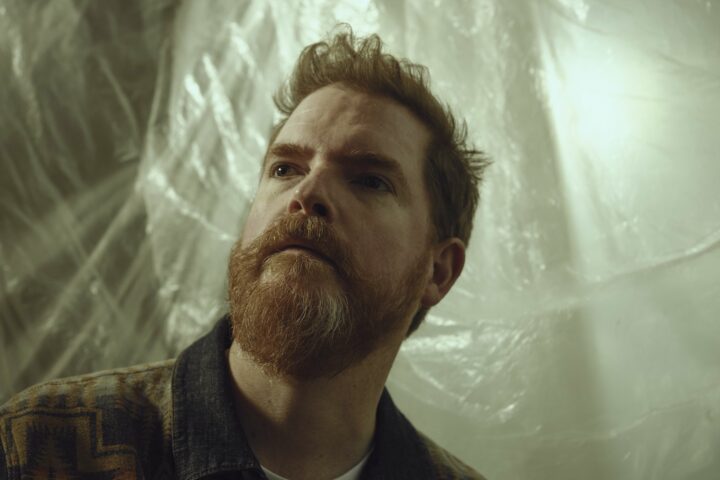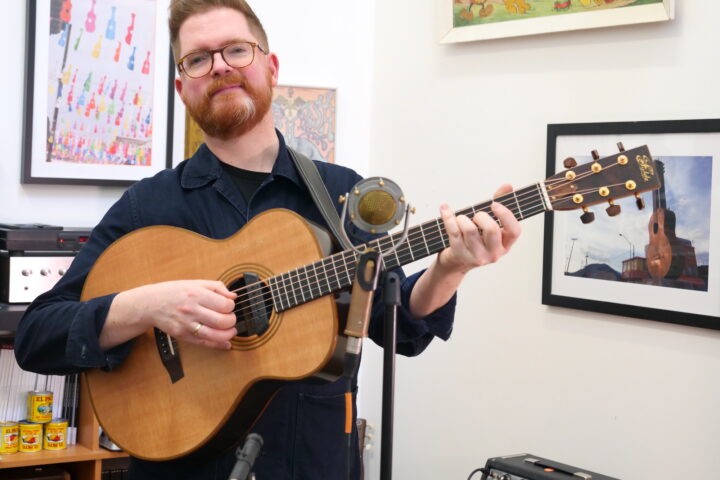A few years back, John Smith stopped by the Fretboard Journal to share a couple tunes, taking a break from playing in Lianne La Havas’s band to reacquaint himself with his own music. In that solo acoustic context, we couldn’t help but notice the influence of British folk in his music, even if he was working solidly in more of a singer/songwriter space, unafraid to bring his many other influences to the fore. That “trad” side always seemed to be more front-facing in his live performances, whether they were solo or in small group settings, but it more or less took a back seat on his recordings. Strange as it may seem, sometimes fully embracing an influence can be limiting, the hardest thing for an artist to do is less…
With John’s upcoming release, Hummingbird, he’s unabashedly made a bona fide traditional folk record–albeit one sprinkled with a few originals. It’s a stripped-down affair, with John’s bitter tea-and-raw honey vocals and deft fretwork gently supported by bits of acoustic bass, fiddle and whistle, strings for one tune and Cara Dillon sharing vocals on another. It’s a lovely record, with stirring renditions of songs mostly from the 18th and 19th century, as well as a more recent cover and an exquisite version of “Unquiet Grave,” which dates back to the 15th century. Conveniently for the guitar geeks among us, the liner notes (“I still feel that they’re important,” John says) share the tunings used for each song–mostly DADGAD, but with a DGDGGD and a CGDGBD thrown in as well.
Always grateful to have an excuse to chat with Mr. Smith, we reached out to John ahead of the October 5th UK release date for Hummingbird and talked about the record and, of course, guitars…
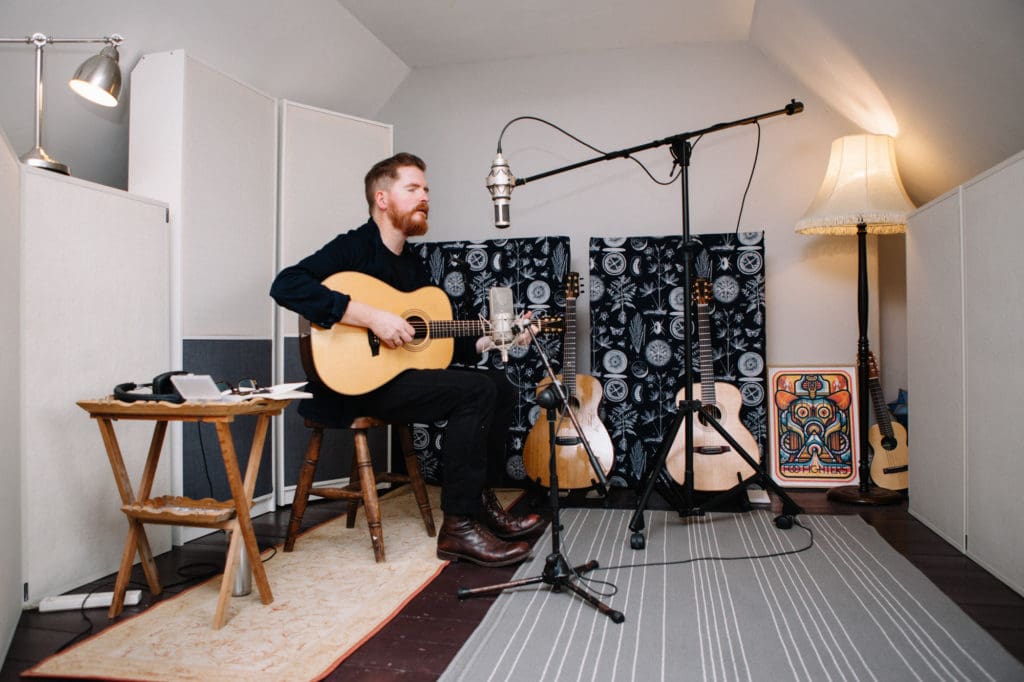
Fretboard Journal: I guess the obvious place to start is with idea behind the record. It’s definitely something that you had a concrete notion about going into it seems…
John Smith: Yeah, I had a lot of songs that I’ve been playing live for a while, like “Lord Franklin” and “Master Kilby.” They’ve been in my life for ages and I suppose I just thought about how it would be nice to record these songs and present them, and then once I started down that rabbit hole I started thinking of lots of other songs and finding new songs and then suddenly I thought I’d love to re-record “Axe Mountain” properly, and I’d written “Boudica” a little while before, and then “Hummingbird” came out all in one go and suddenly within the space of two weeks I’m really thinking seriously about making this record. I had 10 songs in front of me. It came together really quickly like that, but really it was born of this desire to commit and make a folk record and to stop calling myself a folk singer and actually wear that hat. People have always told me I’m a folk singer, but I’ve never made a folk record and it just felt like the right time of my life to actually do it. I just wanted to commit to the music that I’ve loved so much, but I’ve never put on tape, you know?
FJ: How much of the material has been part of your repertoire for a long time? It sounds like there were a couple songs that are older and a new song as well…
JS: Well, actually yeah. “Axe Mountain,” I recorded that for Map or Direction back in 2009. It’s been part of my live show for 10 years now. “Boudica,” I wrote it last year, never did it live. I considered putting it on Headlong and didn’t, obviously. It’s a very different type of song. “Hummingbird” is brand new.
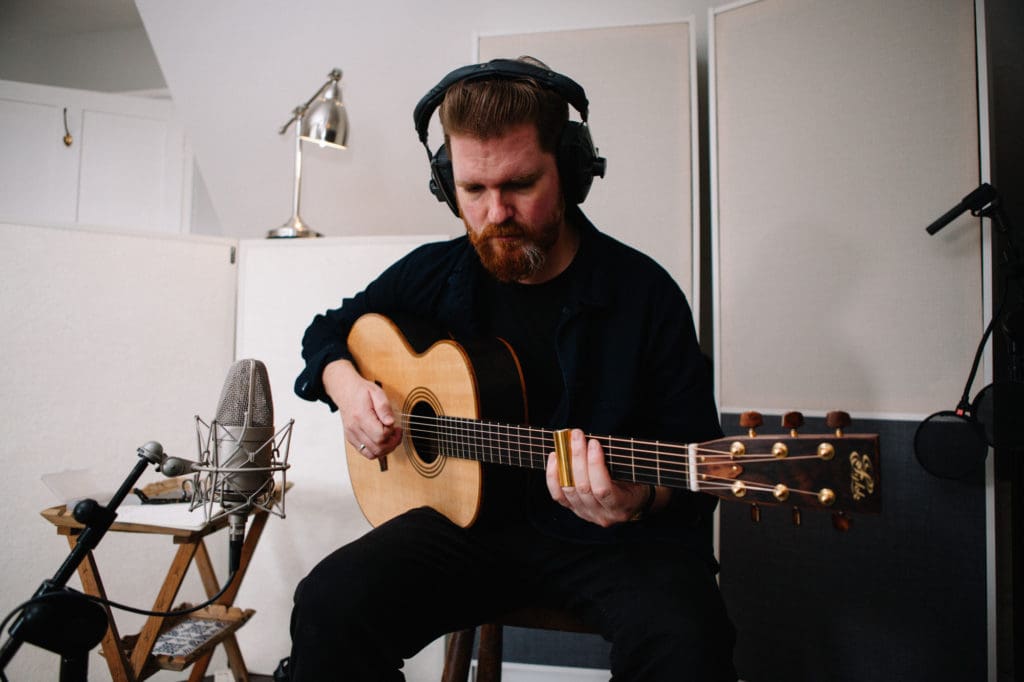
FJ: Hummingbird couldn’t be anymore different than Headlong. Was there an element of a reaction to Headlong?
JS: No, not really. I didn’t think deliberately, “I’m gonna make something that’s really different.” I just thought that I’ve had this record in me for, it feels like a good few years, but it’s never been the right time to do it. Thirty Tigers invited me onto their roster and I said, “I’m gonna make a folk record. It might not be what you’re after,” and they said, “No, that’s great! We want to get into folk music,” so they were very encouraging in the process of putting it together.
It just felt like the right time to do it. I don’t know what the next record will be. Maybe the next record I’ll go back to my Coodercaster…it does feature on this one a little, high up in the background winding away.
FJ: This doesn’t feel as much like a guitar-centric record as some of the others. Of course, the guitar features prominently, but you’re not taking solos, really, the arrangements and your parts seem very much in the service of the song. Was that a conscious decision or was it just these arrangements just kind of came together naturally and that’s how they went down?
JS: Yeah, I didn’t even think about it, to be honest. I think it all has to be in the service of the song, doesn’t it? Headlong, I think every single track has a guitar solo on that record. I sort of think the way that I play on this record is sort of…it’s the most…it feels like the most “on display” my playing has been, despite the fact that there aren’t lots of showy parts. I’m playing…comfortably, but…Oh, what am I trying to say? I’m playing as close to the bone as I can, like really, really digging in and I think all throughout I really sort of just wanted to concentrate on the guitar really just bolstering the whole thing.
FJ: There’s not a lot of other instrumentation going on for the most part, the acoustic bass sometimes gets kind of upfront a little bit on a track or two, but if you took away the guitar parts, it would be a very naked record.
JS: There’d be nothing going on.
To be honest, I just didn’t really consider. I just … It’s a collection of some very time honored songs and some new ones and it just felt like everything should be in service to these folk songs, you know?
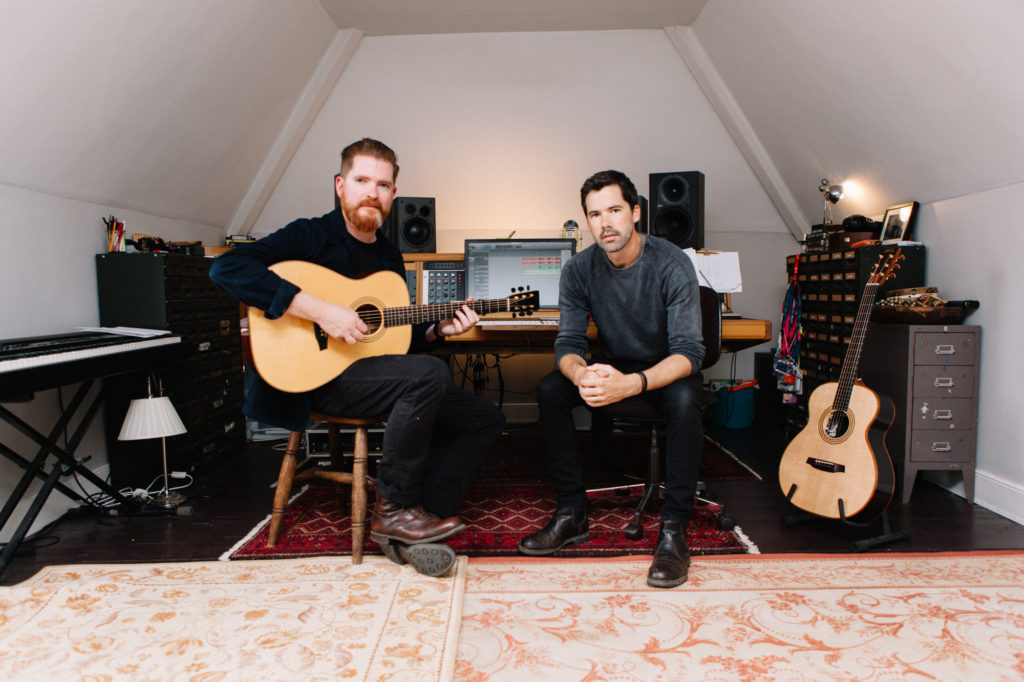
John with producer Sam Lakeman in the studio.
FJ: Yep. You did this all at the same studio [Random Sounds] with the same producer [Sam Lakeman] as Headlong, right?
JS: Yes.
FJ: Did this record come up while you were making Headlong, “We need to work together on another thing…” or was it just like, “Okay, I’ve got this new thing and I was comfortable there, so let’s go back…”?
JS: Yeah, we said at the end of Headlong we should do this again because we had so much fun making Headlong, and Sam is a very experienced folk musician. He plays with Cara Dillon and he’s been on the folk circuit in the UK for 30 years, and when I started talking about recording folk songs he was already a good sounding board. He was very encouraging, but very frank. When I was talking about certain songs like “Lakes of Pontchartrain,” he’d say, “No, that would be like karaoke, we don’t need it,” but then I’d say, “Oh, what about ‘Unquiet Grave?’” He’d go, “That could work.” I think I knew early on that I didn’t want to make a folk record with anyone else.
It was very natural and when we went in, we started setting up and the first day you’re throwing mics up and just getting your sounds together and figuring out your tune…
We had four songs in the can on Day One. It happened really quickly and really naturally. It felt great, you know? We just used, I think, one Neumann mic on the whole thing. Kept it simple.
FJ: Then, the other players came in later for overdubs?
JS: Yeah, that’s right. I recorded my parts, we sat and listened and really thought about what each song needed. I just didn’t want to add too much. There were a couple of songs where I had string parts in my head. I was ready to just grab a pen and paper and start writing it down and I just thought, “No, lets have no more than a violin or two,” you know? And I’m really glad I stuck with that, actually. That lush orchestration, as I learned with Great Lakes, is really hard to replicate live and expect it to be good.
FJ: That brings up the next obvious question: You’ve got a pretty busy tour touring schedule for the Fall. Is it gonna be just solo or are any of these folks that played on the record gonna be joining you for some of these shows?
JS: Yes, for some of it. Obviously, they’re very busy. John McCusker plays with Mark Knopfler and Ben Nicholls plays with Seth Lakeman, so I’ll have them on a couple of shows and then I’ll have my regular touring trio on all the rest.
FJ: Okay, so what is your regular touring trio? What’s the arrangement?
JS: It’s another guitar and a double bass, two brothers [John and Joe McGurgan], they look identical. One of them was in Game of Thrones–if you think White Walker and then you look at them…
FJ: Other than the Coodercaster, which guitars made it onto the record? How many of your Fyldes?
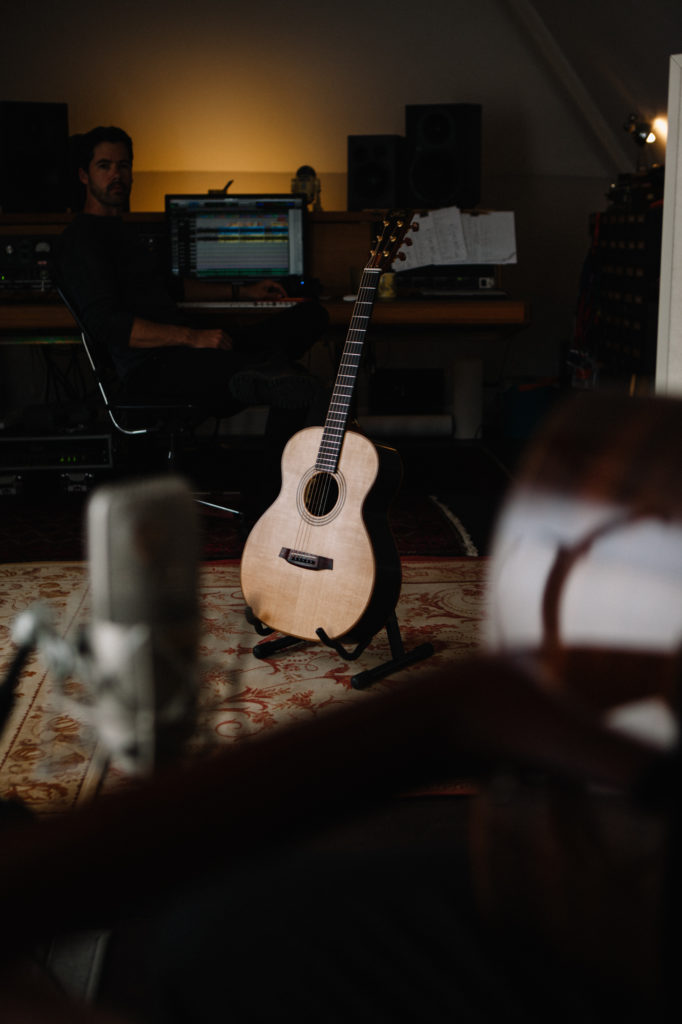
JS: My two main Fyldes: I have two Falstaffs, an Indian rosewood and spruce, and then a cedar/Madagascan rosewood, and then a new guitar that Roger [Bucknall] built, this Brazilian rosewood Alexander, which is a sort of OM size…that made it onto a track or two. It was three Fyldes, my Fylde tenor guitar is on there, and then…just looking at it…my old Gibson LG-2 is on there, a ’64, and then…yeah, my ’72 D-28 is on there as well. So it’s a pretty good spread of guitars.
FJ: What was the densest track? How many guitar parts?
JS: I think probably “Boudica” or “Unquiet Grave” have three or four guitars.
FJ: Speaking of that new Brazilian one, Roger’s newsletter kinda ratted you out. You sent it back for a little strip-down and refinish?
JS: Yeah, yeah. It started as a new pickup because I wasn’t getting on with what I had in there and he just asked how the finish was doing, because he was concerned about how it was sticking to the rosewood, and I just said I’m finding it too thick, I thought it would sing better if we strip it. He sort of rolled his eyes and said, “Right, okay. When do you need it?” And I said, “Six weeks,” and then he had it back to me in three. It’s unbelievably beautiful.
[Editor’s note: As Roger put it, “We have taken it apart, stripped the lacquer and given it a light refinish, then wire wool, polish and elbow grease. Elbow grease comes in soft containers about 5 ft 9 inches long, with a beard, called Paul. (How can a beard be called Paul?) Well done Paul. It is now so UN-shiny that it doesn’t even have a reflection…”]
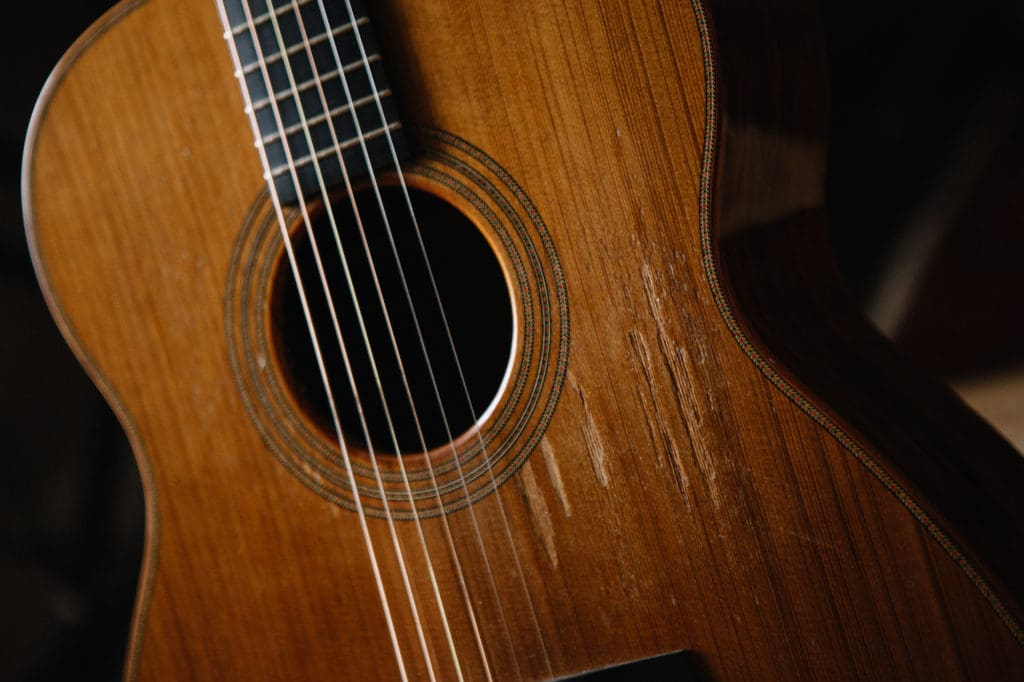
FJ: You guys seem to have as robust a relationship between musician and luthier as just about anybody I can think of.
JS: Yeah, I feel very fortunate there. We’re very tight, but he tells me when something isn’t gonna work. He will say no to me…
FJ: He will? Okay. It’s not always clear when you see what’s showing up in the newsletter. It’s like, “Wow, he went really far out for that one…”
JS: Yeah.
FJ: Isn’t there a nine string…
JS: I had an eight-string Dobro he built, but in the end we just put it to a six. It just wasn’t happening. It started out as a fan fret, then we put straight frets on it, then we put six strings. It sounds fantastic.
FJ: How many Fyldes do you have now?
JS: One, two, three, four, five…six including the banjo.
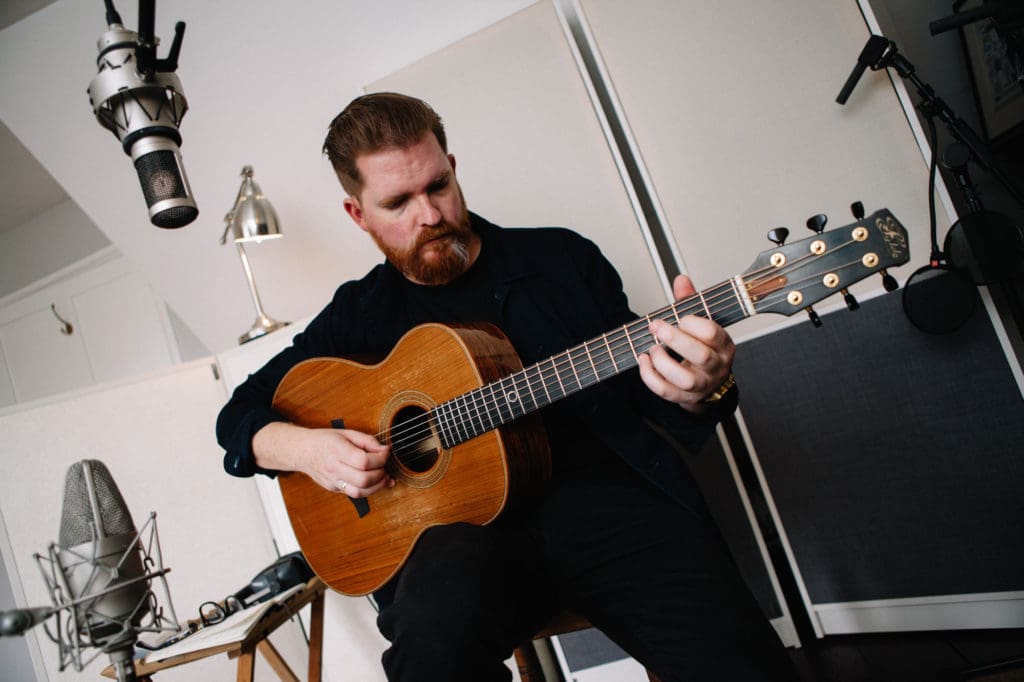
FJ: Getting back to the record, let’s talk a little bit more about the traditional songs and how you chose them. Are they favorite songs or are they songs that you just happened to learn, like some of the older ones?
JS: “Lord Franklin” has been part of my repertoire since the beginning of my touring career. My dad was a big John Renbourn fan. He always played that song, so I’ve been carrying that one around for years. “Master Kilby” I’ve been playing for four or five years.
FJ: Where did you hear that first?
JS: In a pub in Liverpool. Just in a late session one night, I heard that song and I just went, “What a tune.” It really blew me away. “Hares On The Mountain,” “Lowlands of Holland” and “Unquiet Grave” are songs that I’ve always really enjoyed, but I’ve never really sung until I started thinking about this record. Those are old songs, but new to me.
FJ: Are these songs mostly that you picked up in informal settings or are these songs that you heard Renbourn or other folks playing?
JS: I heard Renbourn do “Lord Franklin,” and Wizz Jones sings “Willy Moore.” The rest of them are things that I’ve picked up live that in my search for songs I came across. Sam introduced me to “Hares On The Mountain,” and then, “The Time Has Come” is my version of the Bert Jansch/John Renbourn version of the Anne Briggs song. Yeah, they all came to me naturally in one way or another, I suppose.
The thing that struck me the most was “Hummingbird,” because that’s one of these songs that just fell out and within half an hour was done and that rarely and I like that song so much. I was sort of amazed by it and it’s always very kind of alarming when a song gets itself written in an evening, and that was the catalyst for committing to the album because suddenly I had a song of mine that I felt was worthy of sitting with all these others, and then I thought, “Well, let me record ‘Boudica’ properly and dig out a couple of these other folk songs that I’ve always wanted to record.” Then it sort of came together really cohesively. Which is why I’ve called the album Hummingbird.
FJ: If it’s the song that ties everything together, it better be the title track, right?
JS: Yeah, that’s right.
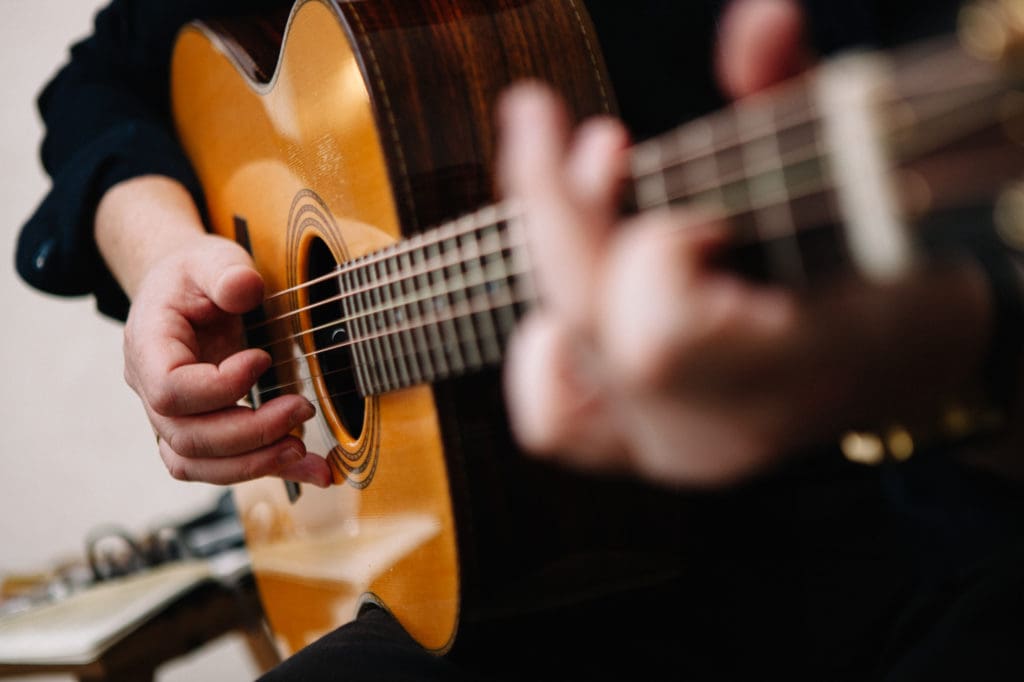
FJ: What’s your writing process? Do you sit down and say, “Okay, this is my three hours a day where I work on writing,” or you’re just noodling and, “Hey! There’s a thing. Let’s follow where that goes…”?
JS: Yeah, that’s more like it. Between touring and a 2-year old, that three hours a day for writing is gone, man. I just don’t have it. I’m always fighting to get it back, but I’m not gonna … Right now, whenever I can sit down with a guitar, which I try and do every day, every now and again a song will just pop out.
FJ: That’s fine. Your songs generally come from the guitar playing first, or do you have a lyric or…?
JS: No, usually it’s a melody or a handful of chords, and then I’ll sort of get a da-da-da-da-da-da, and I’ll think, “Oh what do I want to say?” And then, either I start writing, and I just go, “Oh god, that’s awful,” or if the first line is good normally I can follow on from there and get the verse written. But every now and again, it’s just a whole complete thought, you know?
You have to be switched on, as Joe Henry says. You have to be switched on and present and ready to receive.
Photos by Simon Whitehead.

